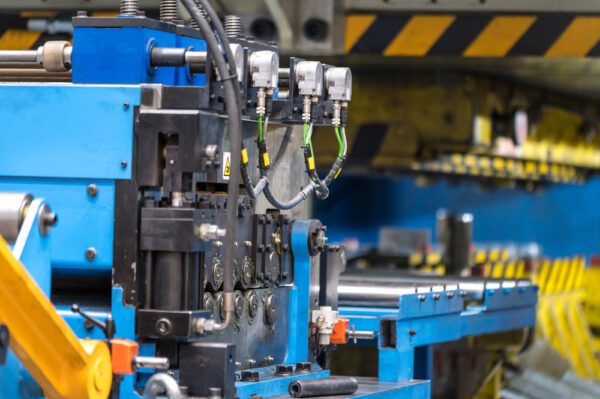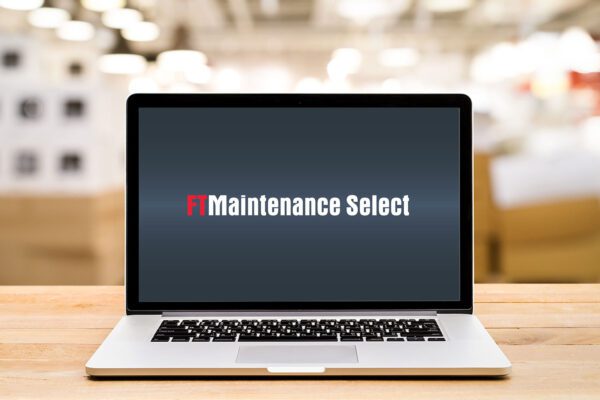
Setting maintenance management goals is essential for any maintenance operation. Clear goals define priorities, give your team direction, and provide measurable results. In maintenance, goals are typically centered on reducing downtime, maximizing equipment life, improving productivity, and lowering costs. In this article, we’ll explore how to set SMART goals for your maintenance department and show how a computerized maintenance management system (CMMS) helps you achieve them.
What are SMART Goals in Maintenance Management?

Setting goals provides maintenance teams with focus and direction, giving purpose to daily tasks. Without goals, maintenance teams can become highly reactive, responding only after issues occur, which can make maintenance operations feel chaotic and disorganized. Well-defined goals help teams prioritize what truly matters and take actionable steps towards a more controlled, predictable work environment that improves asset reliability.
The SMART Goal Framework
One of the most well-known goal-setting methods is the SMART framework, developed by business consultant George T. Dorian in 1981. It was created to help business leaders write more effective objectives and improve their chances of achieving them. Though its meaning has changed over time, the SMART acronym generally stands for:
- Specific: clear, precise, unambiguous
- Measurable: quantifiable, trackable, has an indicator of progress
- Attainable: reasonable to achieve; challenging, but possible
- Realistic: relevant, within your power to achieve
- Timely: time-bound, within a defined timeframe, has a deadline
Following the SMART methodology provides an easy, useful way for maintenance teams to set clear goals and offers a standard for evaluating current objectives, increasing the likelihood of success. For example, “reduce equipment downtime by 10% within the next 6 months through consistent preventive maintenance” is a lot more actionable than “reduce equipment downtime”.
While all goals don’t necessarily follow the SMART mold, the approach is a useful guide for creating actionable maintenance objectives.
| Track Your Progress with Maintenance KPIs
Learn about common key performance indicators (KPIs) used by maintenance teams to measure their progress towards SMART goals by reading the following articles:
|
Why SMART Goals Are Important for Maintenance Teams
SMART goals are especially important for maintenance teams because they position the maintenance department as a value-adding function instead of a cost center. Compared to strategic business functions, the direct costs of maintenance are highly visible and more immediately measurable, which unfortunately makes maintenance operations an easy target for cost-cutting.
Also consider that reactive maintenance, which is performed after equipment has broken down, can create the perception that the department is inefficient, disorganized, and not doing their job. At the same time, the benefits of preventive maintenance (PM) and other proactive strategies take time to show their effectiveness. Because these improvements like extended asset life and lower long-term costs aren’t immediately visible, maintenance teams often face additional scrutiny from leadership during budget reviews.
Given these factors, setting SMART goals can help maintenance teams change how the organization views them. Setting goals brings strategy, structure, and accountability to highly operational work, and connects maintenance activities to the organization’s broader business goals like lowering costs, improving reliability, and increasing productivity. Progress towards SMART goals can also be used as justification for investments in new equipment, additional staff, or other resources.
Examples of SMART Maintenance Goals

As previously mentioned, maintenance goals are typically related to how the maintenance teams can decrease unplanned downtime, extend equipment life, increase productivity, and reduce maintenance costs. The following examples show how common maintenance objectives can be transformed into SMART goals. These and other goals are covered in our article 8 Maintenance Management Objectives.
Example 1: Decrease Unplanned Downtime
SMART Goal: Decrease unplanned downtime on critical equipment by 15% within the next 12 months by following manufacturer-recommended preventive maintenance schedules. Progress will be measured by comparing the total number of unplanned downtime hours this year to the previous year.
- Specific: Focuses on reducing unplanned downtime for critical equipment.
- Measurable: Defines a 15% improvement, tracked through total unplanned downtime hours.
- Attainable: Achievable through consistent preventive maintenance.
- Relevant: Supports production goals and operational efficiency.
- Timely: Expected within a 12-month timeframe.
Example 2: Extend Equipment Life
SMART Goal: Increase the average useful life of critical production equipment by 10% over the next 24 months by implementing a preventive maintenance program that includes regular inspections, lubrication, and timely replacement of worn parts. Progress will be measured by tracking equipment age at retirement or replacement compared to historical averages or the manufacturer’s useful life estimate if internal data is not available.
- Specific: Focuses on extending the life of critical equipment.
- Measurable: Targets a 10% increase in average equipment lifespan, tracked through maintenance records.
- Attainable: Achievable through regular preventive maintenance and monitoring.
- Relevant: Longer equipment life reduces capital expenditures.
- Timely: Expected within a 24-month timeframe.
Example 3: Increase Technician Productivity
SMART Goal: Increase the average number of work orders completed per maintenance technician by 10% over the next 6 months by automating scheduling, standardizing tasks, and introducing a mobile CMMS work order app. Progress will be measured by counting the number of work orders completed by each technician per week.
- Specific: Focuses on increasing productivity.
- Measurable: Targets a 10% improvement in the number of work orders completed per technician.
- Attainable: Achievable through improvements to scheduling, resource allocation, and access to digital work orders.
- Relevant: Higher productivity allows the team to address more maintenance needs without adding staff.
- Timely: Expected improvement with 6 months.
Achieving Your Maintenance Department Goals with a CMMS

Setting SMART goals is only half of the battle – achieving them requires the right tools to support your team. Many results-driven organizations use computerized maintenance management system (CMMS) software to help reach their maintenance objectives. A CMMS enables teams to:
- Reduce costs related to asset management, equipment maintenance, and MRO inventory
- Increase productivity and mobility for maintenance staff
- Easily manage maintenance schedules and employee workloads
- Shift from a reactive to proactive maintenance strategy to reduce unplanned downtime
- Improve communication between the maintenance department and the rest of the organization
- Extend equipment lifecycles and maximize performance
- Generate and analyze reports to track progress towards goals and identify opportunities for improvement
- Document and maintain compliance with safety and regulatory requirements
By combining SMART goal-setting with a CMMS, maintenance teams can become more strategic, accountable, and provide value that benefits the entire organization.
Reach Your Maintenance Management Goals with FTMaintenance Select
Turning SMART goals into tangible results requires focus, effort, and the right tools. FTMaintenance Select provides a powerful CMMS platform that empowers you to implement the processes, maintain the documentation, and track the performance metrics necessary to reach your goals.
By centralizing all your maintenance data into a single system, you gain a bird’s-eye-view of your operations, making it easier to stay on track and measure progress. Request an FTMaintenance Select demo to see how the system can help optimize maintenance operations and demonstrate your value to the organization.